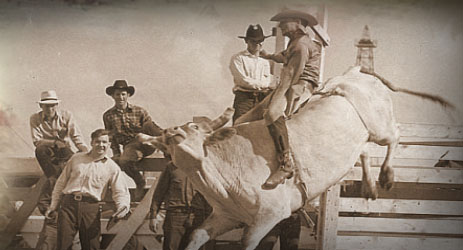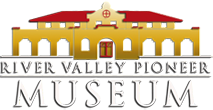Where the Rodeo Began

A group of cowboys from the Laurel Leaf Ranch, located east of Canadian, conceived the 1888 project of holding a public contest with steer roping as the main event. In the years to follow, it was remembered that there was “roping and tying down”, horseraces, tournament races, and dancing indulged by the multitudes.
In this time before the Anvil Park Rodeo, this event stands as an unmarked memorial of the people who settled this region. Things missing then were the carefully evolved rules that govern rodeo today, and a constructed rodeo ground with grandstands.
Lining Main Street of the lively cow-town of Canadian stood hundreds of spectators. There in the dust filled frame shack lined streets were turned loose the enterprising riders who elected to risk the perils of attempting conquest of infuriated outlaw horses. No referees were nearby to halt the plunging ride as the timer's gun blasted to end the ten second ride. Contestants rode until either horse or man was proven to be the best and risked plunging into buildings, railings, and onlookers. In later years, space was provided next to the Santa Fe Stockyards for the contests, but the streets of town were elected for the horse races, tournament races, and other events.
July 4th became a day of celebration and entertainment in the following years, the main forms being music, speeches, and horseracing. It wasn't until the Chamber of Commerce sponsored expositions to carve a financial footing and the rodeo began to exist as a community project, as it still is today.

